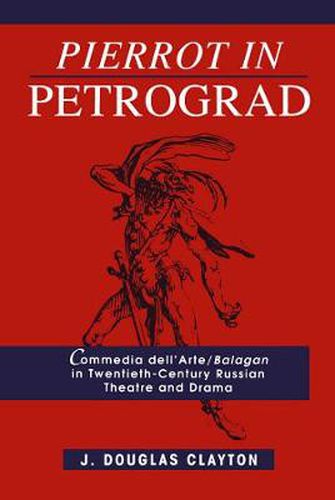Readings Newsletter
Become a Readings Member to make your shopping experience even easier.
Sign in or sign up for free!
You’re not far away from qualifying for FREE standard shipping within Australia
You’ve qualified for FREE standard shipping within Australia
The cart is loading…






Commedia dell'arte was an essential ingredient of the revolution in Russian art in the early 20th century. During this period artists sought inspiration in surprising places - icon painting, primitive art, and (in the theatre) circus, music-hall, and commedia dell'arte . The devices and motifs of Italian improvisational theatre played a central role in overcoming theatrical realism and naturalism and formed a basis for a new and expressive theatricality. Douglas Clayton examines the tradition of commedia dell'arte as the Russian modernists inherited it, from its origins in Italian street theatre through its various transformations: in Italy (Gozzi and Goldini’s plays); in France (the development of Pierrot and the restructuring of the plot); and in Germany (Tieck’s and Hoffmann’s meta-theatre). He also analyzes crucial texts by Gozzi, Lothar, Benavente and Schnitzler that came to play a central role in the Russian theatre. Tracing the history of commedia dell'arte on the Russian stage, he demonstrates that the introduction of the tradition was theory-driven and discusses several milestone productions in the pre- and post-revolutionary period. Clayton examines the impact of commedia dell'arte , Russified as the new theatrical genre of balagan, on both popular and lesser-known Russian playwrights, and, in conclusion, explores the significance of the commedia dell'arte as a theoretical underpinning for Sergei Eisenstein’s theories of theatre and film. Pierrot in Petrograd , which includes translations of five short plays and commedia-style scenarios, should be of particular interest to students of Russian drama and theatre.
$9.00 standard shipping within Australia
FREE standard shipping within Australia for orders over $100.00
Express & International shipping calculated at checkout
Commedia dell'arte was an essential ingredient of the revolution in Russian art in the early 20th century. During this period artists sought inspiration in surprising places - icon painting, primitive art, and (in the theatre) circus, music-hall, and commedia dell'arte . The devices and motifs of Italian improvisational theatre played a central role in overcoming theatrical realism and naturalism and formed a basis for a new and expressive theatricality. Douglas Clayton examines the tradition of commedia dell'arte as the Russian modernists inherited it, from its origins in Italian street theatre through its various transformations: in Italy (Gozzi and Goldini’s plays); in France (the development of Pierrot and the restructuring of the plot); and in Germany (Tieck’s and Hoffmann’s meta-theatre). He also analyzes crucial texts by Gozzi, Lothar, Benavente and Schnitzler that came to play a central role in the Russian theatre. Tracing the history of commedia dell'arte on the Russian stage, he demonstrates that the introduction of the tradition was theory-driven and discusses several milestone productions in the pre- and post-revolutionary period. Clayton examines the impact of commedia dell'arte , Russified as the new theatrical genre of balagan, on both popular and lesser-known Russian playwrights, and, in conclusion, explores the significance of the commedia dell'arte as a theoretical underpinning for Sergei Eisenstein’s theories of theatre and film. Pierrot in Petrograd , which includes translations of five short plays and commedia-style scenarios, should be of particular interest to students of Russian drama and theatre.